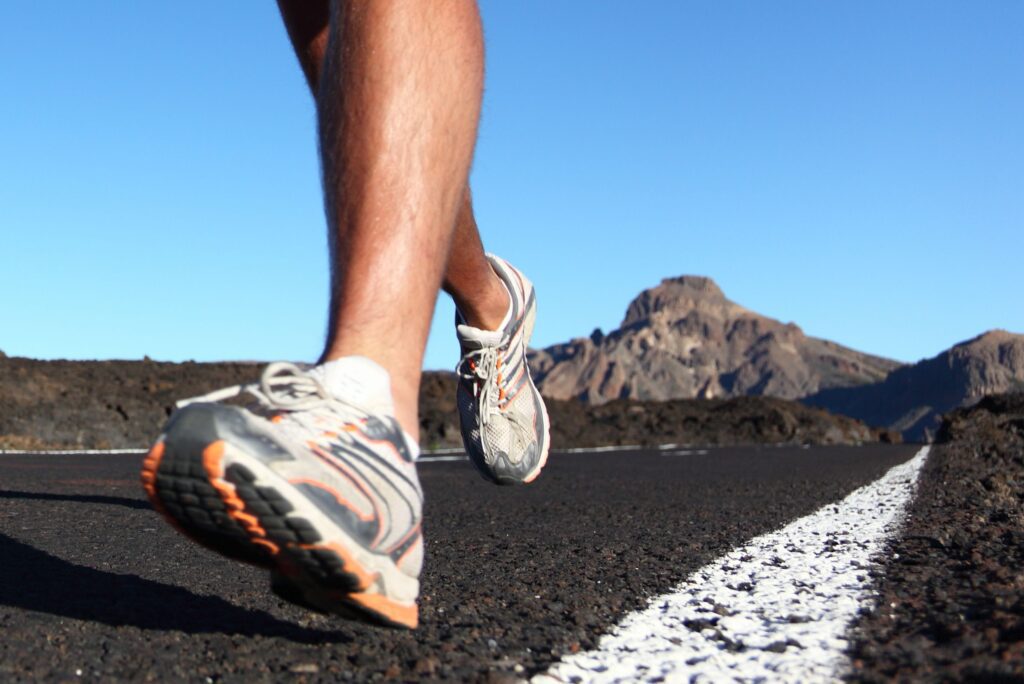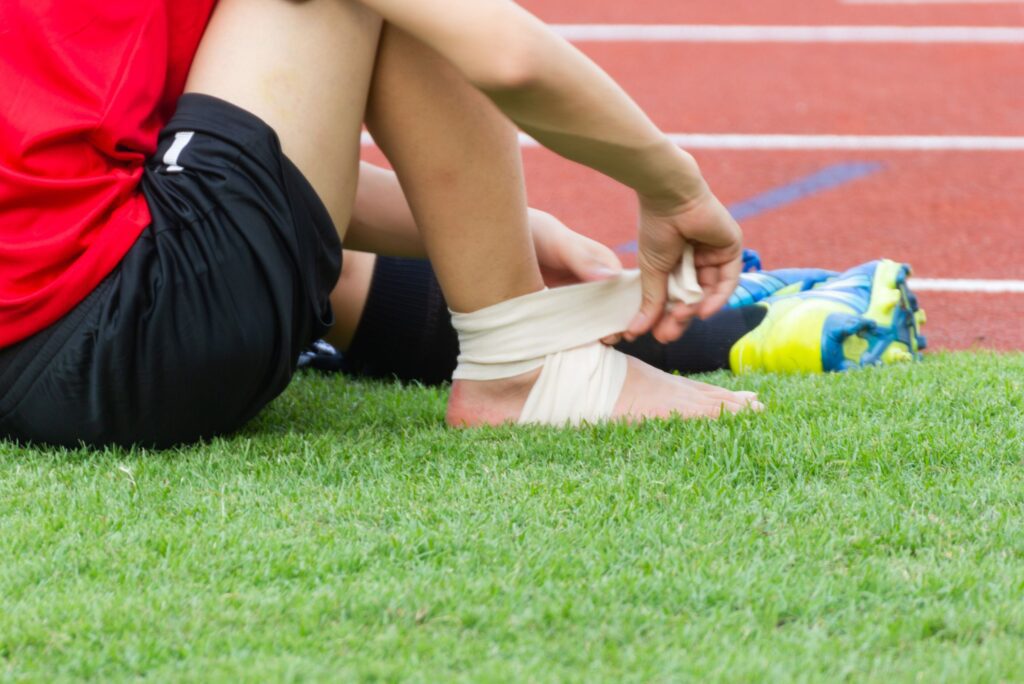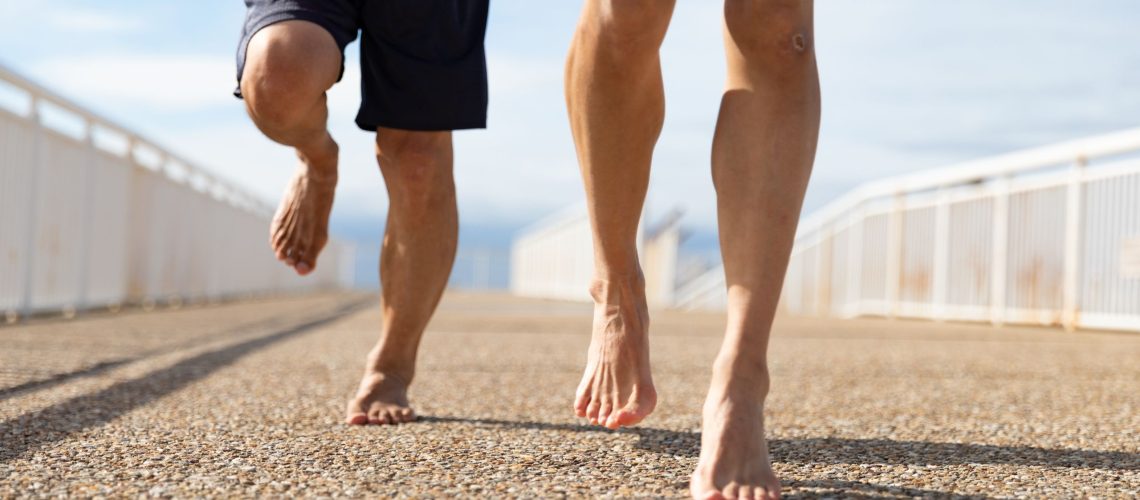Barefoot running has stirred lively discussions among runners, both seasoned and newbies alike. This trend revolves around running without footwear or opting for minimalist shoes that provide minimal support and cushioning. In this article, we’ll delve into the nuances of barefoot and shod (traditional shoe-wearing) running, examining their impact on foot strike patterns, shock absorption, energy expenditure, gait adaptations, injuries, and proprioceptive feedback.
1. Foot strike pattern
When you observe a barefoot runner, one of the most noticeable differences from shod (shoe-wearing) runners is how their feet contact the ground. Barefoot enthusiasts often land with a forefoot or midfoot strike, while those in traditional running shoes use a rearfoot strike more commonly. This variation in foot strike significantly affects both shock absorption and energy consumption.
A study by Lieberman et al. 2010 found that barefoot runners typically have a forefoot or midfoot strike, which leads to lower collision forces than the rearfoot strike seen in shod runners. This difference in foot strike mechanics has significant implications for shock absorption.
2. Shock absorption
Whether barefoot or minimalist shoes, forefoot strikers generate smaller collision forces than rearfoot strikers, commonly found in traditional running shoes. Typical running shoes often have a built-in heel lift of 10-14mm, encouraging a heel strike pattern. This variation changes how shock is absorbed, with forefoot strikers relying more on their calf muscles, while traditional shoes use cushioning materials in the heel.
De Wit et al. 2000 showed that cushioned running shoes provide more shock absorption at the expense of increased muscle activity. Barefoot runners, in contrast, absorb shock primarily through their calf muscles.

3. Energy expenditure
While energy expenditure during running is crucial for athletes, the relationship between barefoot and shod running remains complex.
Divert et al. 2008 found that for every extra 100 grams added per foot, the runner consumes about 1% more oxygen. However, it’s essential to consider equal-weight conditions, where shoes appear to provide an overall drop in energy consumption of 3-4%. The authors concluded that running barefoot offers no metabolic advantage over running in lightweight, cushioned shoes.
Moreover, research suggests that individuals may naturally adapt their running style to what is most economical for them. Dallam et al. (2005) demonstrated a 7.6% increase in oxygen use when a group of elite habitual rearfoot strikers was taught to run with a midfoot strike.
4. Gait adaptations
Barefoot runners often display distinct gait adaptations, including a shorter stride length, increased stride frequency, and early activation of calf muscles. In contrast, rearfoot runners may experience a deeper depression of the heel fat pad and a longer stride length.
5. Injuries
Various factors, including previous injuries, gender, body weight, flexibility, shoe choice, core strength, and training intensity, influence injury risk in barefoot running. Studies have yielded mixed results, with some suggesting no significant difference in injury rates between rearfoot and forefoot strikers but variations in injury location and type. Achilles, calf, metatarsal stress fractures, and forefoot injuries are common among barefoot runners, while traditional shoe users may face more quadriceps injuries and fat pad compression.
Giuliani et al. (2018) reported cases of metatarsal stress injuries in runners using barefoot-simulating footwear, underlining the importance of careful consideration and monitoring when transitioning to minimalist shoes.

6. Proprioceptive feedback
One undeniable advantage of barefoot running is the heightened proprioceptive feedback it provides. Without a cushioned barrier between the foot and the ground, the body gains a better sense of its position in space, enhancing awareness. While this might not be a game-changer for casual runners, it can be a valuable asset.
Summary Of Evidence
| Aspects | Barefoot Running | Shod (Traditional) Running |
|---|---|---|
| Foot Strike | Forefoot or midfoot strike, reducing heel strike injuries | Heel striking is more common, potentially increasing injury risk |
| Proprioception | Enhanced proprioception, better terrain adaptation | Reduced proprioception due to cushioning |
| Energy Expenditure | Slightly lower energy expenditure in lightweight shoes | Slightly higher energy expenditure in heavier shoes |
| Shock Absorption | Limited shock absorption may rely on calf muscles | Improved shock absorption, reducing impact-related injuries |
| Injury Risk | Increased risk of Achilles, calf, metatarsal stress fractures, and forefoot injuries | Lower risk of impact-related injuries, but potential for other types |
| Gait Adaptations | Gait adaptations may be required, with a transition period | Natural gait for most, fewer adaptations needed |
| Accessibility | Not suitable for everyone; biomechanics may limit accessibility | Wider accessibility for various foot types and biomechanics |
Conclusions?
Despite ongoing research and debates, we have more questions than answers regarding barefoot versus shod running. A crucial factor to consider is an individual’s biomechanics and foot posture. Not everyone can comfortably transition to barefoot running due to functional limitations. However, some professional athletes have successfully switched under healthcare professionals’ guidance, often to replicate match play or reduce stress on a specific injury.
As a seasoned podiatrist, my clinical recommendation remains cautious when transitioning to barefoot running. It’s essential to weigh the pros and cons carefully and, if necessary, seek guidance from a physiotherapist, osteopath, exercise scientist, or podiatrist.
For expert advice on your running journey, simply click here to make a booking.
Dr Josh Osborne
Podiatrist, B.Pod., Cert 4. Personal Training
Your feet are your foundation, so make every step count.


